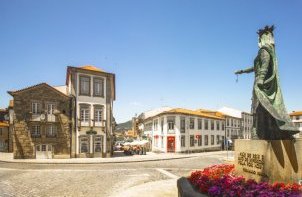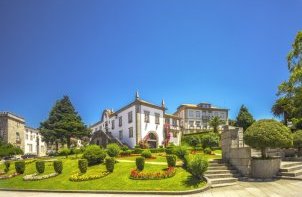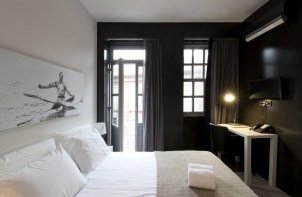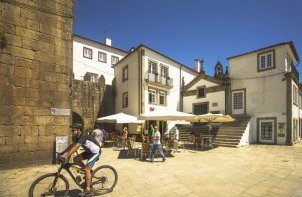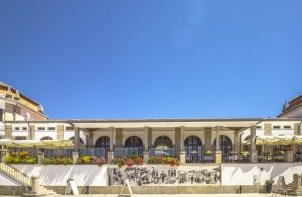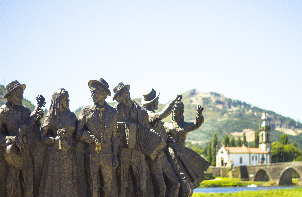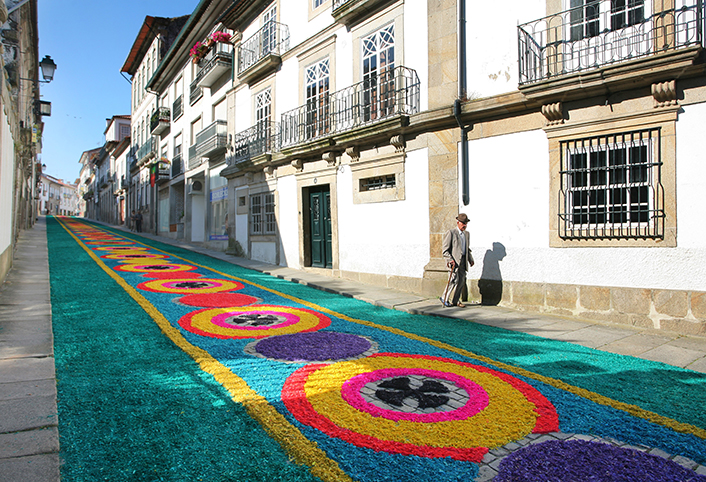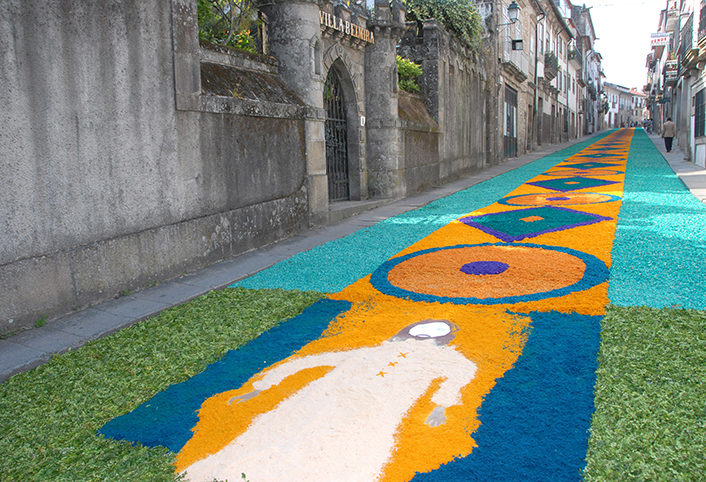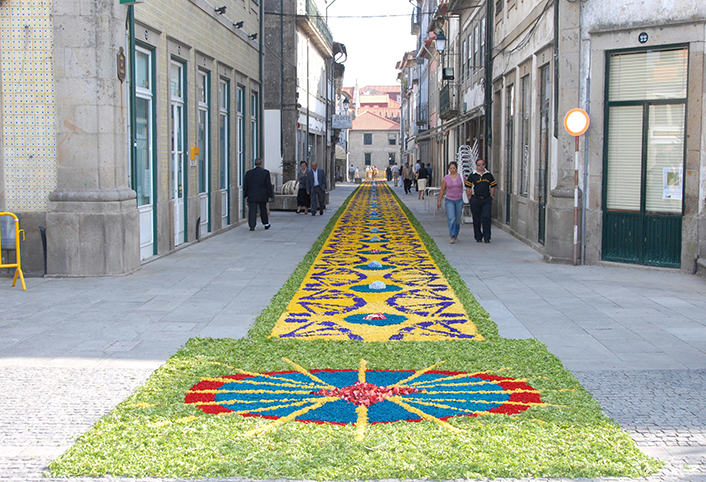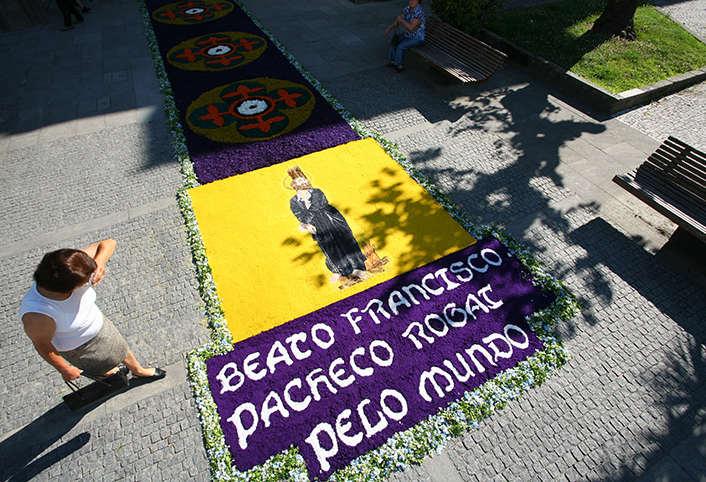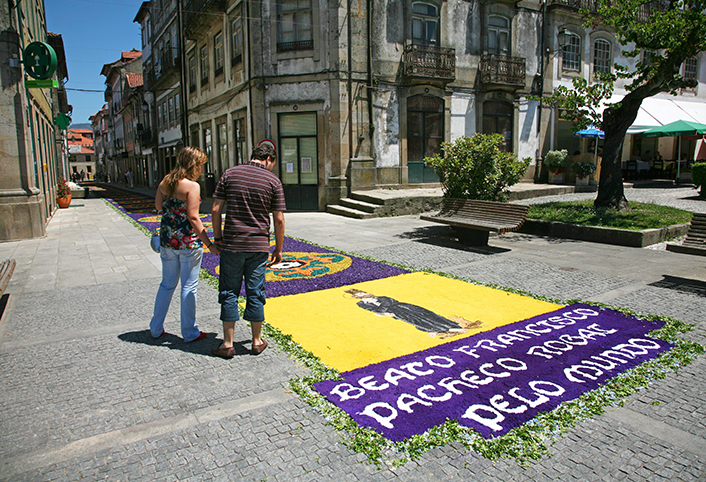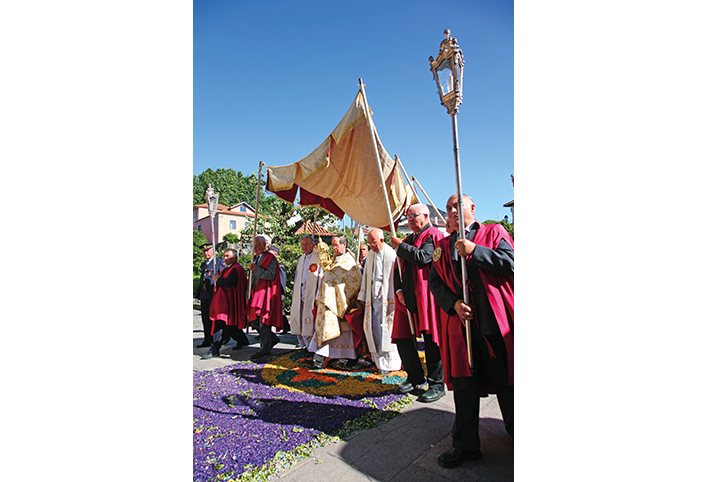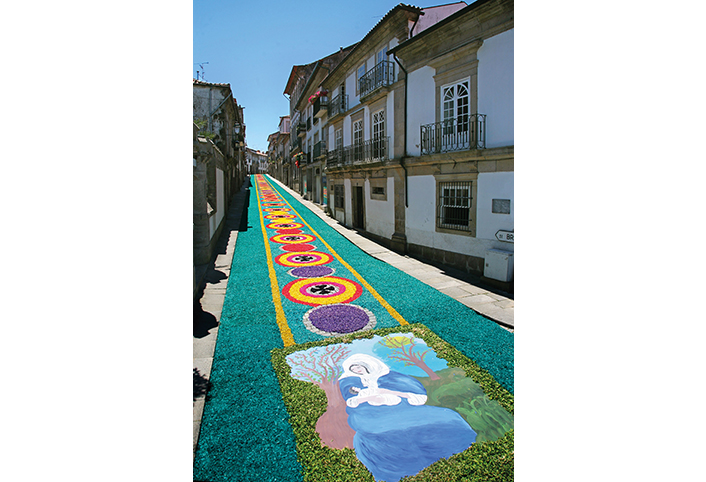Corpus Christi
The tradition of the floral rugs for Corpus Chisti arose in the early eighteenth century in favour of dances, inventions and holy litters in order to restrict the procession to its religious component. In Ponte de Lima it is not possible to accurately date the beginning of the tradition, yet it is well known that it was the fish and sardine vendors that cleaned and filled the squares with these adornments.
For the elaboration of the carpets several molds are used that give shape and color to the designs filled with sawdust, flowers and branches of shrubs, thus transforming the streets into true works of art that dazzle the eyes of the visitors. After a few years' interruption, the procession returned to the streets of Ponte de Lima in 1962, through the initiative of Don Carlos Pinheiro and has remained alive since then.
